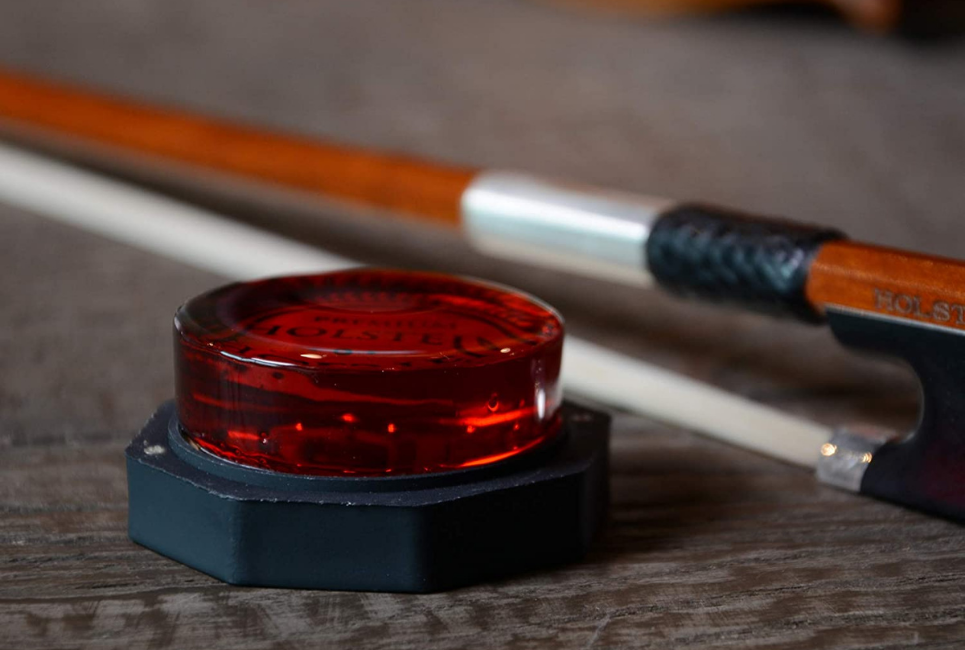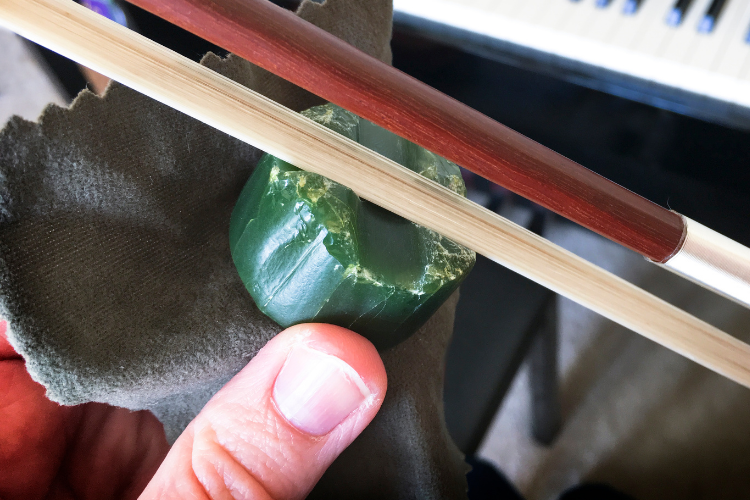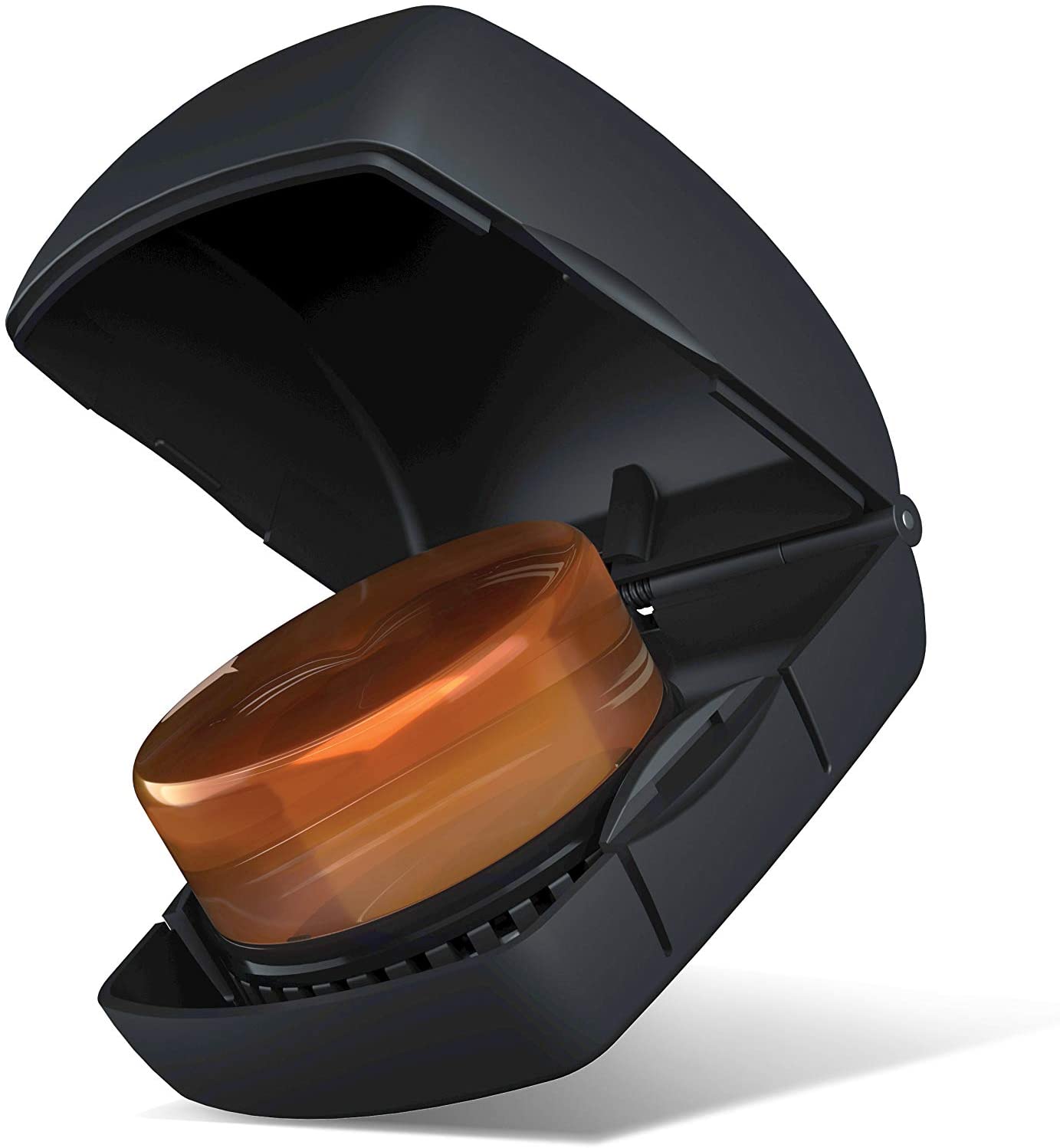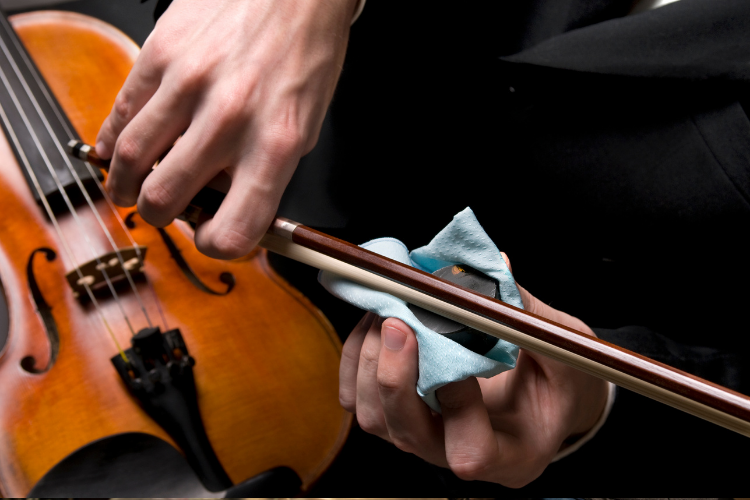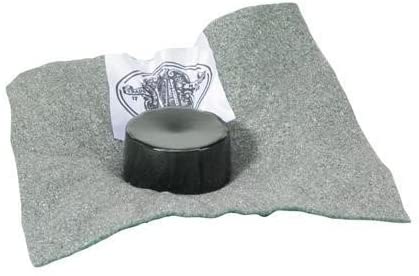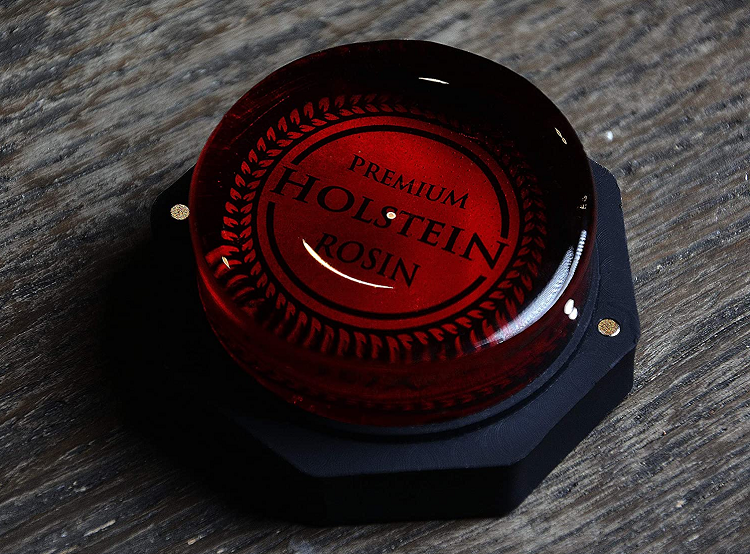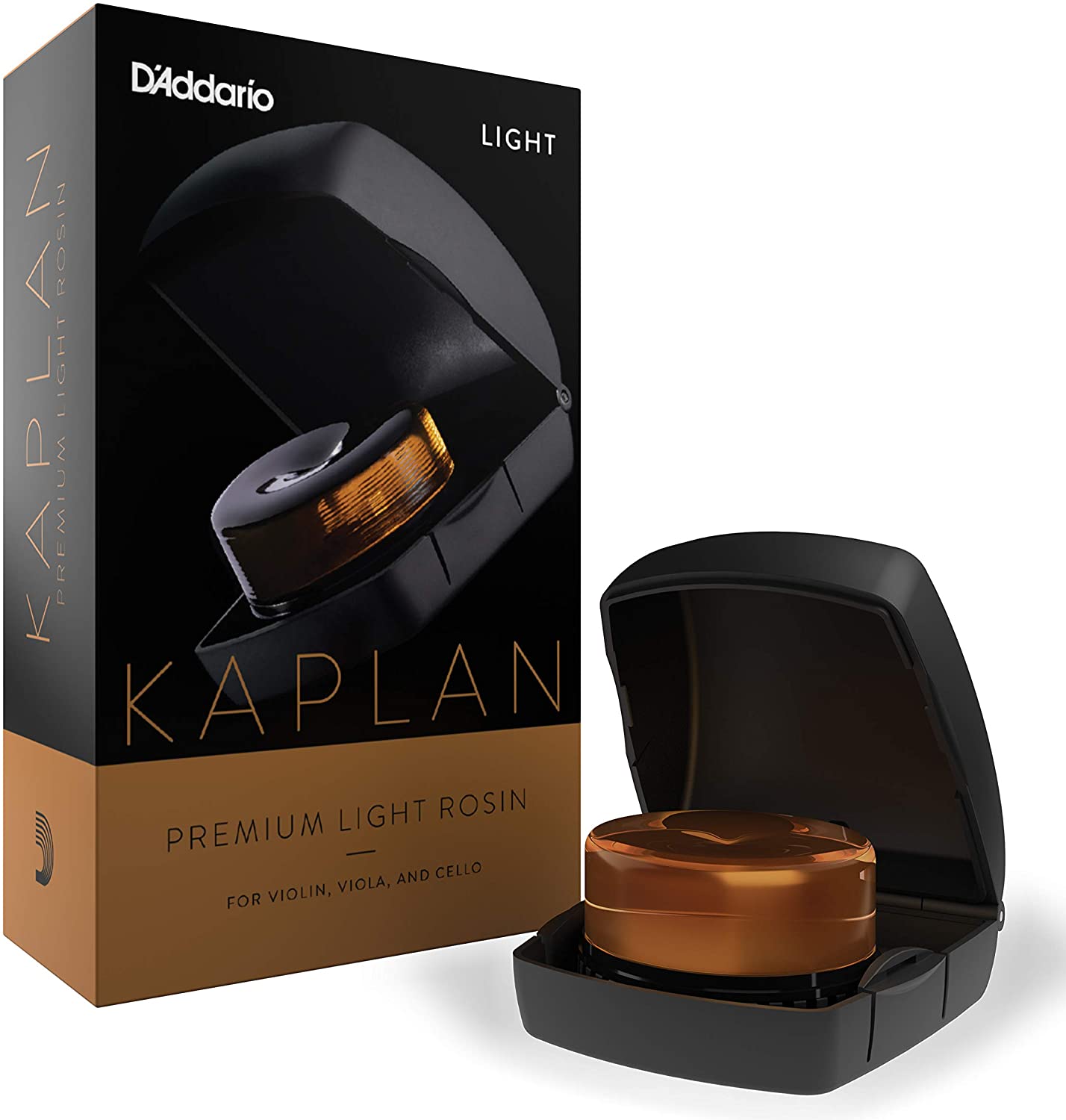- How to Find the Best 5 String Violins - April 19, 2022
- Top Violin Accessories to Consider - April 18, 2022
- Best Left-Handed Violins Guide - April 13, 2022
Rosin is an essential accessory for any stringed instrument. It can have a noticeable impact on the sound you make with your violin, no matter how skilled a violinist you are.
Rosin is a by-product from purified tree sap used to coat your violin bow so that it glides smoothly across your violin strings and does not get stuck while producing music.
This best violin rosin guide will explain what rosin is, how to use it, and what products are best for your situation.
Bottomline Up Front
I recommend The Original Hill Dark Rosin. It is one of the most popular brands of rosin for stringed instruments because of the purity in its composition. I also love how easy it is to use and that you can use all of the rosin even as you get near the end of its life span, something lacking in other products.
Selection Criteria
When selecting rosin for this best violin rosin guide, I looked at the quality of the material, the durability and lifespan of the rosin, and how easy it was to store and apply. Everyone needs something that they can store securely with their accessories. Beginners and young musicians need something easy to use.
Beginners also use less rosin than professionals, which means a single container lasts longer. So I picked rosin that has a longer life span to ensure that your investment does not go to waste near the end.
Best Violin Rosin Guide: Why is Rosin and Why I Need it?
As mentioned, rosin is a by-product of tree sap. If you’ve ever touched tree sap, you know that it is very sticky and difficult to get rid of. Rosin, however, is a firm by-product that has been left to harden in the form of a fox or a cake. There are many terms associated with rosin like:
- Box
- Cake
- Winter
- Summer
- Hard
- Soft
- Amber
- Black
- Light
- Dark
- Red
- Firm
All of these words are used to delineate between different types of rosin. Let me try and make things a little clearer:
Box and Cake
Cake rosin comes in many forms. Rosin can come in a box or a cake shape. Boxed rosin is a square that is usually universal and suitable for multiple stringed instruments. Boxed rosin is more durable and does not break or crack as easily as cake rosin. Cake rosin is a higher quality, usually pure and designed for professionals.
Winter and Summer
‘Winter’ and ‘summer’ are synonyms for ‘dark’ and ‘light’ rosin. Dark, light, black, amber and red all refer to the actual color of the rosin. Different trees produce different colors. For a violin, lighter colors like honey yellow are preferred, although there is nothing to stop you from using amber or black if your circumstance requires it.
Soft and Firm
‘Soft’ and ‘firm’ or ‘soft’ and ‘hard’ are other descriptors that refer to the actual firmness of the rosin. Softer rosin is generally recommended for a violin, while firmer rosin is recommended for an upright bass. However, this can change based on where you live. If it is sweltering, you do not want soft rosin that will melt all over the place.
So you might avoid a honey yellow, soft rosin if you live in the desert of Arizona during the hot, humid months because it is more likely to leave a sticky mess. You might instead pick darker, firm rosin or amber medium firmness rosin.
Why You Need to Use Rosin
Every violinist should use rosin. Rosin makes your bowstring sticky enough so that they glide across your violin strings without getting stuck.
If you do not use rosin, you might find that no matter how talented you are, you can’t glide smoothly and produce the sound you want because your strings keep down or get stuck. Rosin helps you make the most out of your musical skill.
How to Use Rosin
Rosin is used on your violin bow. To use rosin properly, you want to tighten your violin bow, hold it in your right hand, and grip your rosin in your left. Then stroke your rosin cake or box across the bow in an even fashion, between five and ten times in a row. If you are left-handed, then switch the order.
Here is a video that shows you how to rosin your bow properly:
If you apply too much rosin, which is bound to happen the first few times you do it, you will have rosin dust all over your lap, although hopefully not all over your violin. There is a learning curve to correctly applying the exact amount of rosin you need, so do not worry about using too much when you start.
If you apply too little because you are judicious with your new rosin cake, you will know it as soon as you begin to play and do not get the grip you want. If that’s the case, take a break, and apply a little more.
How Often to Use Rosin
You should rosin your bow once for every 4 hours you play. If you are a beginner or a student, you will likely rosin your bow twice per week. Try to maintain a log of how often you have played or practiced to know when to reapply. As you get more experience under your belt, you will learn to feel when it is time to rosin again.
Types of Rosin to Avoid
As mentioned, there are many types of pine trees out there which means you get lots of different types of rosin. Some manufacturers like to mix in metal flakes to amplify the quality produced. This is great for professionals but certainly not something you have to worry about if you do not perform regularly.
There are certain types of rosin explicitly designed for violin, usually harder in texture and lighter in color. As previously mentioned, you can find a cake or box shape. Both of these are perfectly suitable, and which one you want to use comes down to your personal preference.
I will not say that you should avoid one over the other because I use both in different circumstances. Box rosin is available in amber, light honey, and transparent colors. I love the box rosin for my violin. It is universal, which means you can use it on multiple stringed instruments. I also use my box rosin on my cello.
Box rosin is usually less expensive and lasts longer. It does not break or crack as often, and it sticks better to non-horse hair bows. I recommend boxes for beginner students who have synthetic bows and want something they know will last long without cracking.
The cake rosin is designed for high-quality violin bows. However, if you can spring for it, I recommend investing in the higher quality, pure take rosin. You can find cake rosin ranging in colors from amber to black.
It does not last as long, so it is designed for intermediate and professional musicians who might go through more rosin in a shorter amount of time. If you have a horsehair bow, absolutely use cake rosin.
So, the color you pick is based on what instrument you are using your rosin for, the environment and weather where you live, and you’re still set.
Selection Criteria
All of the items on this best violin rosin guide have been evaluated based on the quality of the material. Pure recipes without any additives are always preferred. All items in this best violin rosin guide were also assessed based on how long the rosin lasts, whether you can use all of it, and how easy it is to apply.
Best Violin Rosin Guide: Top Picks
This best violin rosin guide will go over my top picks, suitable for any skill level.
The Original Hill Dark Rosin
The Original Hill Dark Rosin is the most popular among professionals, teachers, and students alike because it works well. It gets its name from allegedly having the original recipe for rosin. It is well suited to any experience as a violinist. I have used this rosin myself, as have my children at various stages of their musical development.
It does not have a hard case but rather a velveteen shell. That shell extends the lifespan and preserves the effectiveness of the rosin.
I love this because my students do not use rosin as often as I do, and it is disheartening for them to buy rosin and then, near the end of the year, learn that it does not work well anymore even though they’ve only used half of it. That does not happen with The Original Hill.
It is softer than another rosin, so it grips your bow more firmly, and you can use it on multiple string instruments. I have a violin and a cello in my house, and I use them for both.
Pros
- Made with pure pine tree resin
- Useful for beginners through professionals
- It has a padded shell that makes it easy to grip
- Softer than other rosin
Cons
- The pouch can melt your rosin if you leave it in the sun in summer
Holstein Premium Violin Rosin
Holstein Premium Violin Rosin is known for its red color. It does not generate a lot of dust which, as a more advanced player, I love because I have a varnish on the exterior of my instrument that rosin dust compromises. This Holstein premium rosin is perfect for professionals. It gives you a smooth release and a high level of grip.
The rosin is red, but that’s not the only thing that stands out; the case is beautifully designed and comes with a magnetic clasp that makes it easy to secure the rosin case while you use it. The case means it is easy to transport and fits snugly in any accessory pouch in your case.
Pros
- It does not generate a lot of dust
- The base of the container is large with a comfortable grip
- You can use it one-handed
- It has a magnetic clasp on the case
Cons
- The rosin can break apart at the base near the end
- It will crumble a bit when you use most of it, so do not plan on being able to use all the rosin
Kaplan Premium Light Rosin with Case
Kaplan Premium Light rosin is suitable for one-handed applications. It comes in a container, so you can easily hold the container as you rosin your bow. This makes it much easier to grip firmly, which is great for children if you do not want them to get sticky hands.
I learned this lesson the hard way; my children thought they would use mommy’s rosin cake, the kind without a container, and it resulted in an extra hour of removing sticky rosin fingerprints from all over the living room.
Given that it comes in a separate container, it is much easier for you to store it in your violin case or with your other violin accessories. If you have an accessory bag built into your case, you can just throw this container with your cleaning cloth.
You can choose light or dark rosin. So if you need firm, dark rosin, you can find the same Kaplan Premium.
The proprietary design limits the amount of dust created when you rosin your bow, which helps alleviate an extra mess in your lap or around your performance space. The high-quality design means it lasts for quite some time and maintains its efficiency throughout its lifetime. What I like most is the dial at the bottom of the case.
When you apply rosin, it is easy to create a groove inside your rosin block or your rosin cake the more often you use it. But this groove makes it challenging to use all of the rosin adequately. The dial lets you turn the block as you use it to apply it equally across the entire cake instead of creating that groove.
Pros
- Case design makes it easy to apply one-handed
- The special formula reduces dust
- Light or dark rosin is available
- The dial on the bottom to prevent groove
- makes for easy, one-handed use.
- The unique formula is designed to minimize the dust left behind.
- Light or dark options are available if you need to adjust for climate
- The dial is on the bottom of the case.
Cons
- It starts to crumble when you reach the end of the block
FAQs
Answer: You do not need different flakes in your rosin as a beginner or intermediate. Some professional rosin has metal flakes like gold, copper, silver, or lead. These infusions can influence the sound you create but only if you are a professional. I wouldn’t recommend these unless you are a top-tier performer.
Answer: Using the right amount of rosin is essential because, without the right amount, your bow will not move efficiently across the violin strings. I advise you to start slowly. It is much easier to add rosin if you have too little than to take rosin away if you have too much.
However, if you have children in your family who are just starting with a violin, be prepared for a mess. Maybe put a cloth down underneath their instrument or on their lap when they rosin their bow to catch any of the dust.
Answer: Dark rosin is softer and is meant for cold, dry environments. Light rosin is used for humid, hot climates. Some people refer to dark rosin as winter rosin because it is better to use in the winter when the weather is cold and dry, and light rosin as summer rosin because it is better to use when the air is hot and humid.
You might live in an area with polar weather throughout the seasons, like Kansas, where you get hot, humid summers but dry, freezing winters. In this case, I recommend investing in both dark and light rosin, switching them out depending on the weather.
Bottomline
I recommend The Original Hill Dark Rosin. All of the items on this best violin rosin guide are great. I have used them all with success. However, The Original Hill Dark Rosin is one of the most popular rosins for any stringed instrument.
It has maintained its reputation as the most popular because it does not fall apart or crumble when you get to the end of its life span, the case is easy to use, and the rosin works beautifully.
Looking for more interesting readings? Check out:

